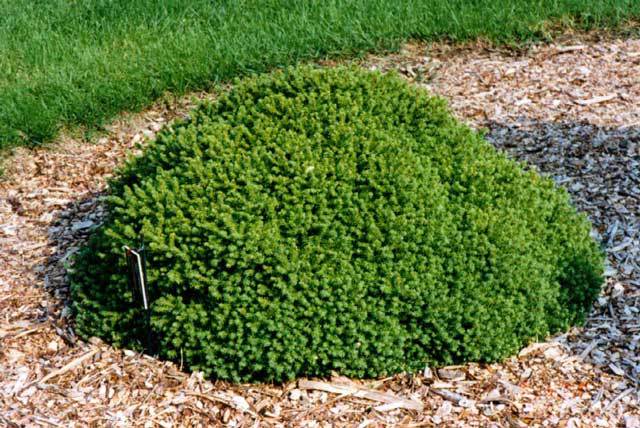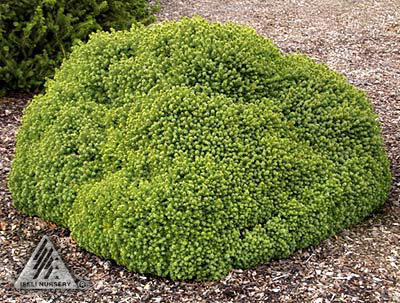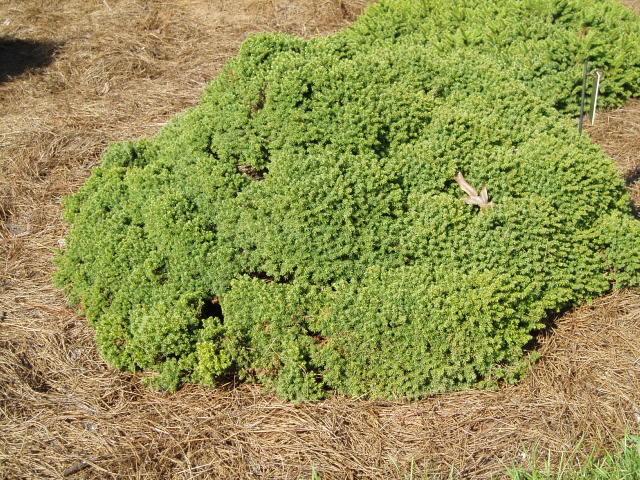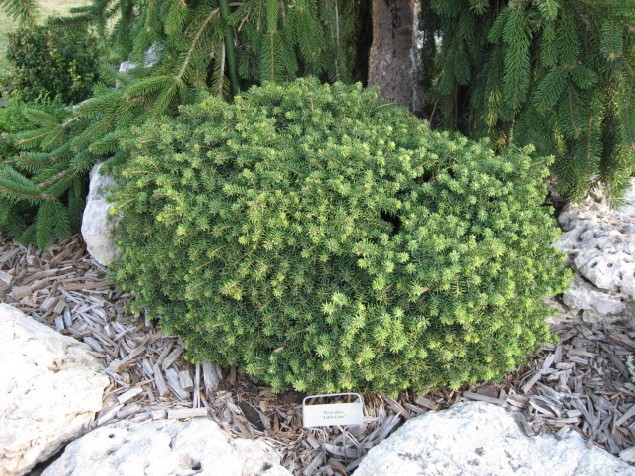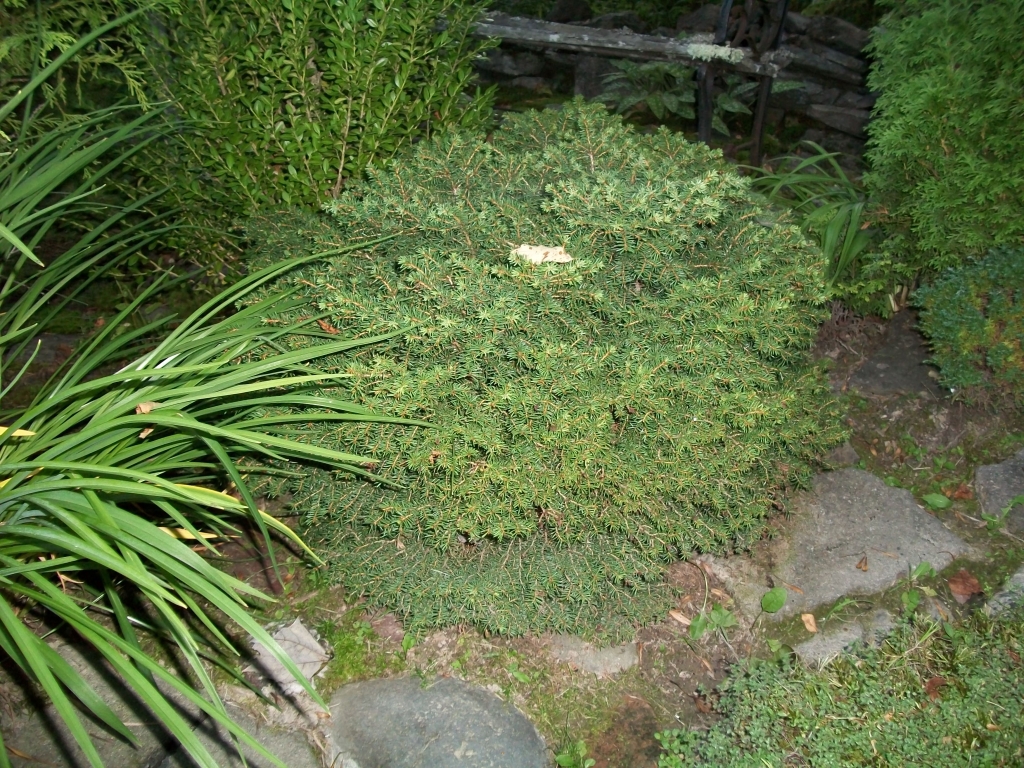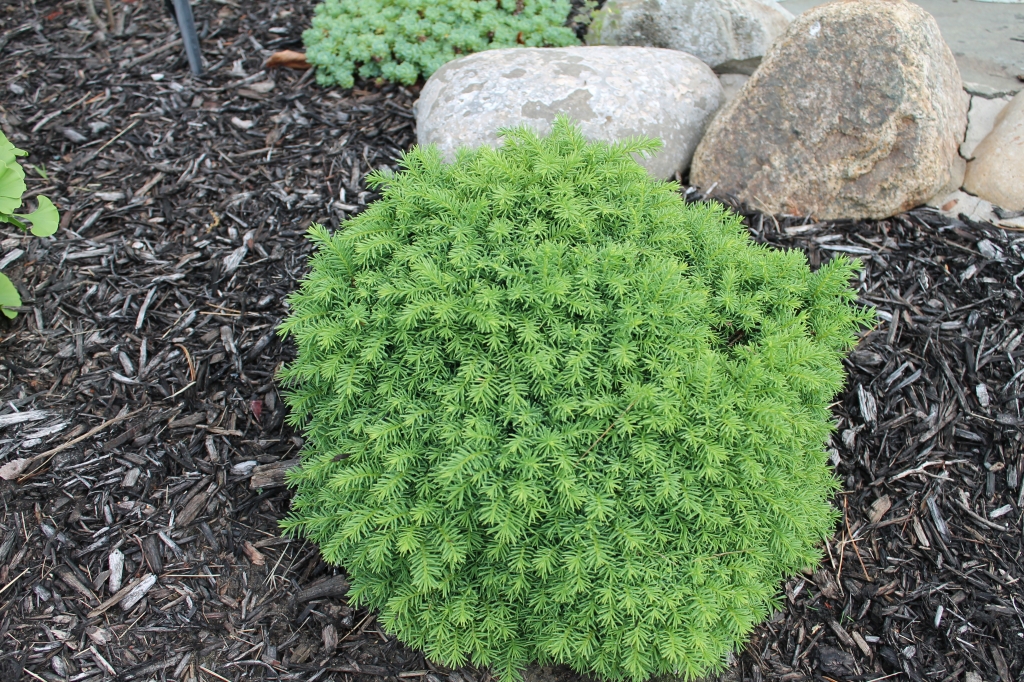Picea abies 'Little Gem' is a deservedly popular and desirable dwarf conifer. It makes for a superb rock garden subject. This diminutive Norway spruce grows as a flattened globe with short, dense, slightly twisted, layered branches that hold finely textured, short, medium-green needles that grow crowded along the stem.
After 10 years of growth, a mature specimen will measure 1 foot (30 cm) high and 18 inches (45 cm) across, an annual growth rate of 1 inch (2.5 cm) or less.
[Iseli Nursery. Boring, Oregon] 'Little Gem' as a "nest-type spruce" with tiny needles and a very dense habit. "This miniature version of Picea abies 'Nidiformis' is simply a wonderful plant."
[Bob Fincham, ACS founder and owner of Coenosium Gardens] hot summer days can burn holes in larger plants. I have also seen this on potted nursery plants of all sizes during their early years of establishment in a nursery bed. To prevent this from happening, a location with some shade during the mid-day is beneficial. The plant is propagated by grafts for higher standards as well as by cuttings for lower plants.
This cultivar originated as a witch's broom that developed in the late 1950s on a specimen of Picea abies 'Nidiformis', the bird's nest spruce, which itself was a witch's broom that had been found on a Norway spruce. F.J. Grootendorst and Sons Nursery of Boskoop the Netherlands is credited with the broom's discovery, nomination and introduction to the nursery trade.
